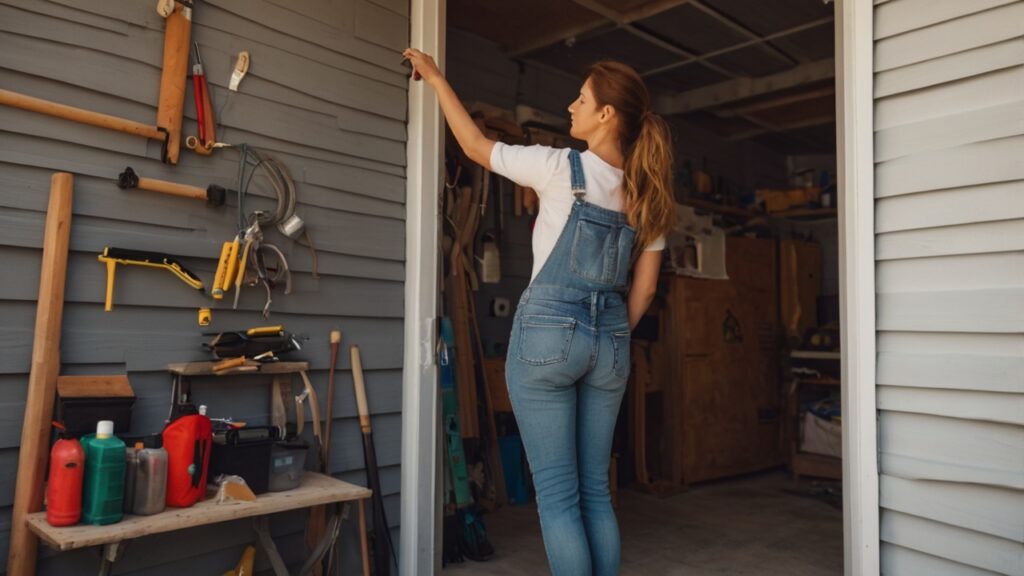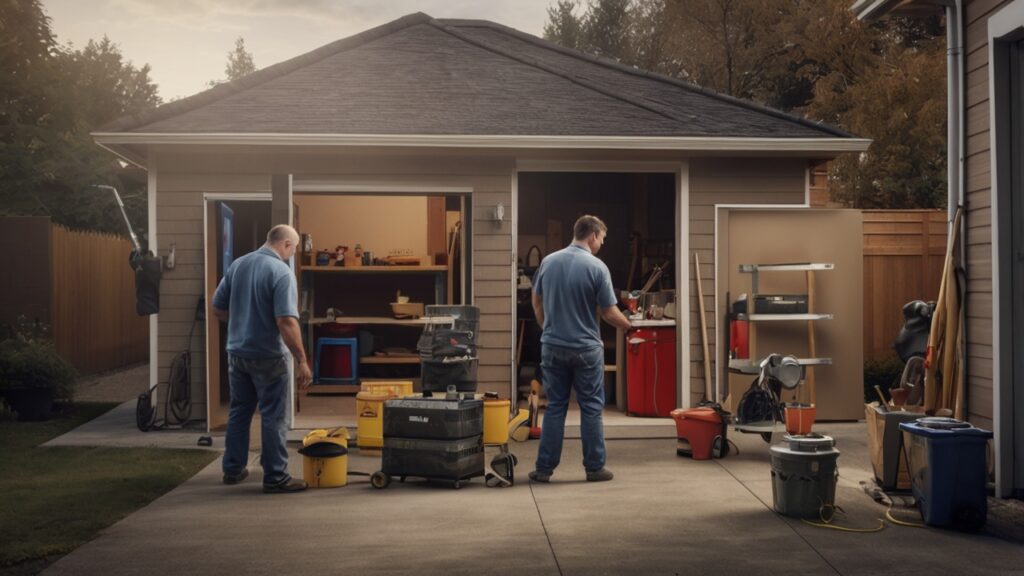If you’ve ever pulled into your driveway late at night and your garage door greeted you with a loud, drawn-out squeak, you know how embarrassing (and irritating) it can be. The truth is, you’re not alone. A squeaky garage door is one of the most common household complaints, and the good news is—it’s usually not a big deal. Most of the time, learning how to fix a squeaky garage door only takes a little inspection, the right lubricant, and maybe a wrench.
In fact, many homeowners manage to stop the noise in under an hour, without needing a professional visit. That being said, ignoring the squeak for too long can lead to more expensive repairs. As one garage door specialist I once spoke with in Durham, NC told me, “A small squeak can be your garage door’s way of whispering that it needs attention before it starts screaming for costly repairs.”
So, let’s break down why this annoying sound happens, How do I make my garage door stop squeaking, and when it’s smart to call in a trusted expert.
Common Causes of a Squeaky Garage Door
There are a handful of usual suspects when it comes to that nails-on-a-chalkboard sound. Over the years, I’ve noticed these causes come up the most:
- Worn rollers – The little wheels that glide along your garage door tracks get old, especially if they’re made of cheap metal instead of nylon.
- Lack of lubrication – Dry metal rubbing on metal is basically a squeak machine. If you’ve never lubricated your door, this is probably the reason.
- Loose hinges, nuts, or bolts – Vibrations slowly loosen hardware, and when parts rattle, squeaks follow.
- Dirty or misaligned tracks – A bit of dirt or a bend in the track can add resistance that makes everything noisier.
While these issues seem small, ignoring them can lead to damage. I once saw a case where a squeaky hinge eventually cracked, leaving the door stuck halfway open. That homeowner ended up needing a full hinge replacement, which could’ve been avoided with a quick tightening job months earlier.
Step-by-Step Guide: How to Fix a Squeaky Garage Door
Here’s a straightforward process that’s worked for me and many homeowners I’ve advised. You won’t need expensive tools—just a ladder, wrench, rag, and the right lubricant.
Step 1: Inspect the Tracks and Rollers
Climb up carefully (safety first!) and look closely at the tracks and rollers. Are the rollers cracked or chipped? Do they wobble? Are the tracks bent or rusted? Sometimes just spotting a worn roller explains the whole squeak mystery.
Step 2: Clean the Tracks
Use a dry cloth or a small brush to wipe away dust, dirt, and cobwebs. If the grime is thick, I sometimes spray a little household cleaner, then dry thoroughly. Don’t grease the tracks—only the rollers and hinges need lubricant.
Step 3: Lubricate the Moving Parts
This is the fun part. A garage door pro I know once said, “Lubrication is the cheapest insurance you can buy for your garage door.” He’s right.
- Avoid WD-40 as your main lubricant—it’s more of a cleaner than a long-term lube.
- Instead, use a silicone-based spray or white lithium grease. Both stick better and protect the metal longer.
- Spray or wipe onto the rollers, hinges, springs, and bearings. Don’t overdo it—excess grease only attracts dirt.

Step 4: Tighten Any Loose Nuts or Bolts
Grab your wrench or socket set and go hinge by hinge, bracket by bracket. Loose hardware is a sneaky cause of squeaks and rattles. Don’t overtighten to the point of stripping—just snug enough.
After this process, open and close the door a few times. Most people notice an immediate difference. The relief is almost instant, and honestly, it feels satisfying to know you fixed it yourself.
When to Call a Professional
If you’ve tried the above steps and your garage door is still squeaking—or worse, making grinding or popping noises—then it’s time to call an expert. Persistent noise could mean a broken spring, bent track, or failing opener motor. These are dangerous to handle without training.
Reliable professionals can also check the balance of your garage door, which is something most homeowners overlook. A misbalanced door strains the opener, shortens its lifespan, and can be unsafe.
If you’re in North Carolina and need a trusted list, check out this resource: 5 Professional Garage Door Services Recommendation in Durham, NC. I’ve personally recommended it to neighbors who wanted reliable, best-in-class service.
At the end of the day, how to fix a squeaky garage door often comes down to simple, routine maintenance: clean the tracks, lubricate moving parts, and tighten the hardware. Do this once or twice a year, and you’ll prevent bigger headaches down the line.
But remember—don’t ignore sounds that don’t go away. Small squeaks can turn into broken parts and higher bills if you keep brushing them off.
If you found this guide useful, share it with a neighbor or on your social media using the share buttons below. You never know whose sleep (or sanity) you might save!
For more home repair tips, visit our main hub here: Pro Service Tips.
FAQs
How do I make my garage door stop squeaking?
Usually, the squeak goes away after cleaning the tracks, applying silicone or lithium grease, and tightening bolts. If it persists, there may be a damaged part.
Can you put WD-40 on a squeaky garage door?
You can, but it’s not the best solution. WD-40 cleans well but fades fast. A proper garage door lubricant like lithium grease works much longer.
What’s the best lubricant for a squeaky garage door?
Experts recommend silicone-based sprays or white lithium grease. They don’t drip, last longer, and protect the metal parts better.
Is it safe to lubricate a garage door myself?
Yes, for most homeowners it’s safe. Just unplug the opener, keep your ladder steady, and don’t mess with high-tension springs. If you see broken parts, that’s a job for a professional.


